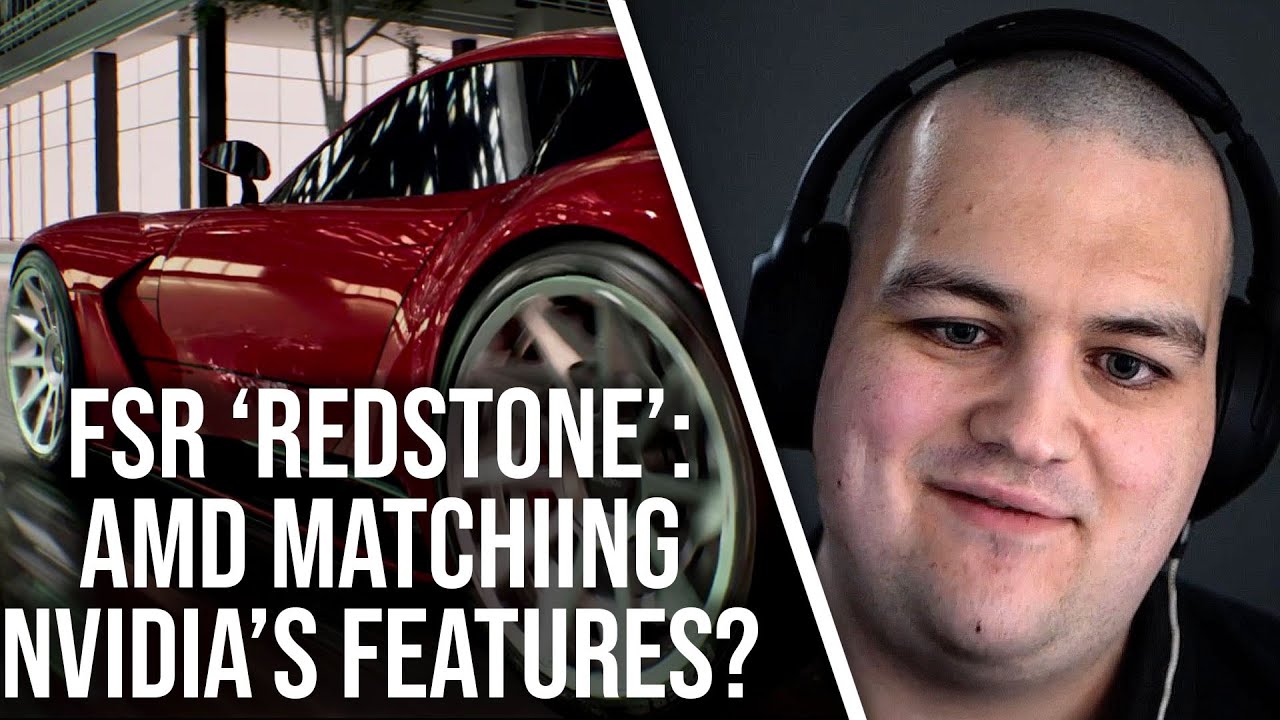The video discusses AMD’s upcoming FSR ‘Redstone’ project, which aims to rival Nvidia’s advanced ray tracing and AI-driven features, but current demos show artifacts and instability, raising doubts about its readiness. While AMD’s efforts could benefit consumers through increased competition, significant improvements in support, stability, and real-world performance are needed before Redstone can truly compete with Nvidia’s established ecosystem.
The discussion centers around AMD’s new FSR ‘Redstone’ project, which aims to match Nvidia’s advanced ray tracing and AI-driven features. AMD is developing technologies like ray reconstruction, neural radiance caching, and AI frame generation to achieve feature parity with Nvidia’s offerings. However, initial demos of FSR Redstone have shown mixed results, with some artifacts, instability, and performance issues, raising skepticism about whether these features are ready for prime time. The speakers emphasize the importance of seeing more polished and convincing demonstrations before fully endorsing the technology.
The speakers highlight that AMD’s early demos, including a CES 2025 temporal upsampling tech and the RDNA4 reveal, did not impress with their visual quality or stability. The demos showed artifacts, inconsistent ray tracing results, and performance below expectations. They note that AMD is still in development and that these technologies need to improve significantly to match Nvidia’s DLSS and ray tracing capabilities, which have demonstrated high quality and stability through extensive developer support and real-world game integration.
There is a consensus that competition between AMD and Nvidia is beneficial for consumers, as it drives innovation and improvement. While AMD’s Redstone aims to catch up, Nvidia currently holds an advantage with its well-established AI upscaling and ray tracing tech, supported by strong developer adoption. The speakers mention that AMD’s branding and terminology for Redstone features closely mirror Nvidia’s, indicating a strategic effort to compete directly. The timeline for AMD’s full implementation is uncertain, with a potential release in the second half of 2025, but much work remains to prove these features can deliver on their promises.
The conversation also explores the implications for Sony’s PlayStation 5 Pro and future consoles. While some Redstone features, like machine learning-based frame generation, could be adapted for the PS5 Pro, significant hardware differences and development efforts may delay their integration. Mark Cerny’s statements suggest that future Sony consoles might adopt AMD’s machine learning solutions more deeply, possibly leading to a refactored version of FSR4 for the next generation. However, current hardware limitations and the need for substantial engineering work imply that some features might be reserved for later consoles, such as the hypothetical PS6.
Finally, the speakers address concerns about AMD’s support and adoption of FSR in the gaming ecosystem. They note issues like the need for better driver support, limited game support, and slow uptake of FSR4 features. Nvidia’s proactive approach—working closely with developers and evangelizing its tech—gives it a significant advantage in gaining widespread support. AMD faces the challenge of closing this gap, not just in hardware capabilities but also in developer adoption and feature support across popular titles. Overall, while AMD has made impressive hardware strides, the success of Redstone and FSR depends heavily on improving support and demonstrating compelling, stable demos that can compete with Nvidia’s established ecosystem.
